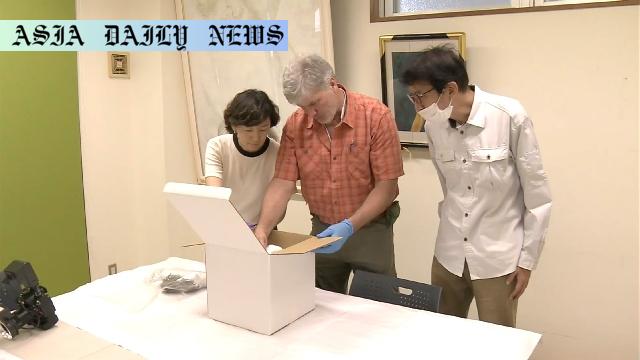Isotope Analysis: Research reveals remains in Okinawa may belong to an American, sparking advancements in identification methods.
Isotope Analysis suggests remains in Okinawa may be of American origin.
Research highlights potential for improved war dead identification.
US and Japan collaborate on DNA analysis to confirm findings.

Introduction to the Discovery
The application of stable isotope analysis on human remains found in Nishihara Town, Okinawa, has provided a significant breakthrough in uncovering the origins of those who perished during World War II. This discovery, announced after analyzing remains uncovered in 2022, underlines the relevance and potential of scientific methodologies in identifying individuals lost in historical conflicts. Although stable isotope analysis is commonly utilized in the United States for such purposes, it remains in its research stage in Japan, highlighting the need for advancements and broader adoption.
The Role of Stable Isotope Analysis
Stable isotope analysis, a method used to study the ratios of carbon and other isotopes in human remains, allows researchers to determine a person’s place of origin. Researchers from Japan’s Ministry of Health, Labor, and Welfare applied this methodology to remains retrieved from Okinawa’s forests, refining its application to potentially identify American origins. While DNA testing is often considered the gold standard for identification, isotope analysis provides a rapid, complementary method, enriching the processes available for identifying long-lost individuals.
Implications for War Dead Identification
Okinawa, historically significant due to the intense battles fought there during World War II, harbors countless remains yet to be identified. This development has far-reaching implications, particularly for families of those who sacrificed during the war. Stable isotope analysis represents a beacon of hope for their quest, paving the way for a systematic and efficient approach to identification. It also signals the possibility of global cooperation in efforts to address the legacy of past wars, with organizations like the US Defense POW/MIA Accounting Agency stepping in to enhance the identification process.
Collaboration Between Nations
In response to this breakthrough, John Byrd, the Scientific Analysis Director from the US Defense POW/MIA Accounting Agency, has taken the initiative to personally oversee the continuation of the research. Not only is he working to conduct DNA analysis in the US, but his visit has also bolstered collaboration between Japan and the United States. Such international cooperation exemplifies how shared history and advanced technologies can unite nations in solving historical mysteries and honoring the memories of the deceased.
Future Prospects of Stable Isotope Analysis
Despite being in its infancy in Japan, the potential of stable isotope analysis is immense. Its application in uncovering and identifying war dead could revolutionize the way remains are handled in the future. Japanese authorities are expected to deliberate on the necessity of expanding this method nationwide, particularly considering the sheer number of unresolved cases of war dead from both domestic and foreign lands. As bereaved families keep a watchful eye, this advancement might set a new standard in forensic science, blending scientific rigor with a deep respect for historical reconciliation.
Conclusion
This remarkable finding from Okinawa not only honors the memories of those who perished in historic conflicts but also showcases the power of interdisciplinary and international collaboration. Stable isotope analysis offers a promising route forward, ensuring that the past can be addressed with the dignity and respect it deserves. As Japan considers a broader application of this technology, it stands as a potential leader in forensic advancements dedicated to solving mysteries that echo through history.



Commentary
Advancements in Identification of Historical Remains
The discovery of potential American WWII remains in Okinawa using stable isotope analysis unlocks new dimensions in forensic science. The methodology’s ability to trace the origins of individuals adds a profound layer to addressing unresolved war losses. It is inspiring to see science bridging the gap between the past and the present, offering solace to countless families who yearn for closure.
Emphasizing International Collaboration
The cooperation between Japan and the United States underscores the importance of global partnerships in solving humanitarian challenges. The personal involvement of prominent figures such as John Byrd from the US Defense POW/MIA Accounting Agency exemplifies the spirit of unity required to tackle these historical puzzles. Such collaborations signify a shared commitment to restoring dignity to those who were lost amid the chaos of war.
The Need for Broader Adoption
Japan’s limited use of stable isotope analysis raises questions about the wider adoption of the technique. Given the profound implications of this discovery in Okinawa, Japanese policymakers and researchers must explore avenues to mainstream such methods across the nation. As bereaved families continue to await answers, the urgency to expand and standardize such technologies is more relevant than ever.
A Hopeful Future for Recognition
As scientific advancements like stable isotope analysis become increasingly sophisticated, the future for identifying historical remains looks promising. This breakthrough not only reaffirms the importance of science in humanitarian efforts but also paints an optimistic picture for generations to come. The initiative to return loved ones to their resting places is a noble cause, and developments like these instill hope that no one will be forgotten.